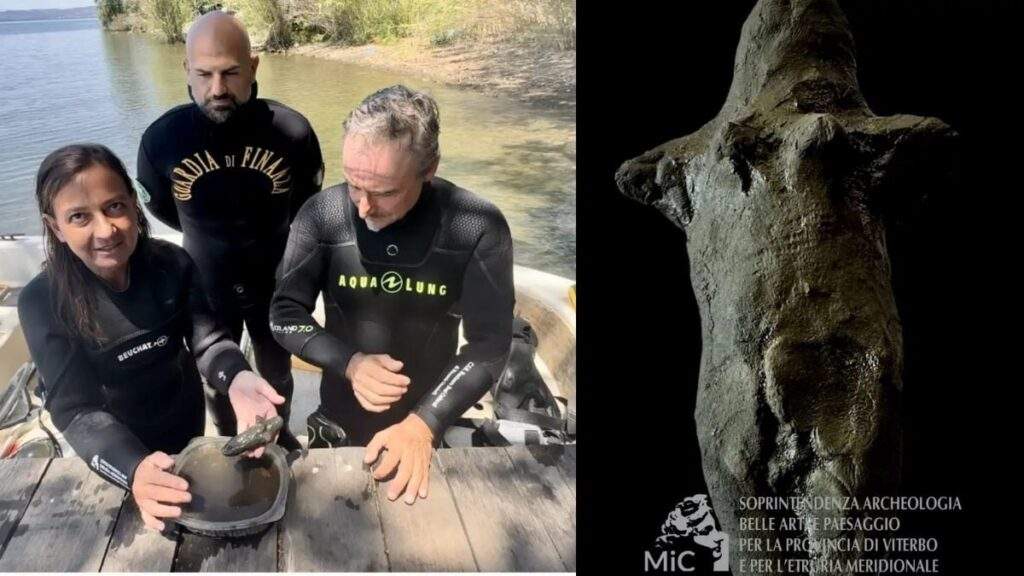Ancient Italy: 3,000-Year-Old Clay Figurine Discovered in Lake Bolsena
A significant archaeological discovery has been made in Lake Bolsena, central Italy, which dates back to the early Iron Age. A 3,000-year-old clay figurine, believed to represent an ancient goddess, has been unearthed submerged in the volcanic lake. The finding is considered a rare glimpse into the early practices and daily life of this ancient civilization.
The figurine, measuring approximately 6 inches (15 centimeters) in length, was discovered by a team of government archaeologists of Italy and police divers at the Gran Carro site on the eastern shore of Lake Bolsena. The site, which sank into the lake due to seismic activity, has been a focus of archaeological research since the 1960s.
The clay figurine’s crude workmanship and fabric impressions suggest it was likely used in domestic rituals. Similar artifacts found in Iron Age graves indicate that such practices were widespread. This discovery is notable for its preservation of both the artist’s handprints and the imprint of the garment, offering a unique view into ritual practices of the time.
Lake Bolsena was formed between 600,000 and 200,000 years ago during volcanic eruptions. The sunken village, possibly built by the Villanovan culture, has provided a wealth of artifacts that reveal much about early Iron Age life. The Gran Carro site is now part of Italy’s National Recovery and Resilience Plan, aiming to enhance the site’s accessibility for visitors and further research.
In addition to the figurine, the site’s Aiola structure, a large pile of submerged stones, is thought to have been built near a geothermal spring. This finding, along with others from the region, helps to piece together the historical significance of Lake Bolsena and its surrounding area throughout different periods, including the Roman era.
The discovery of this ancient figurine is a significant find, offering a rare insight into the daily life and practices of early Iron Age societies. The Gran Carro site is now an important archaeological location, providing valuable information about this period in history.
